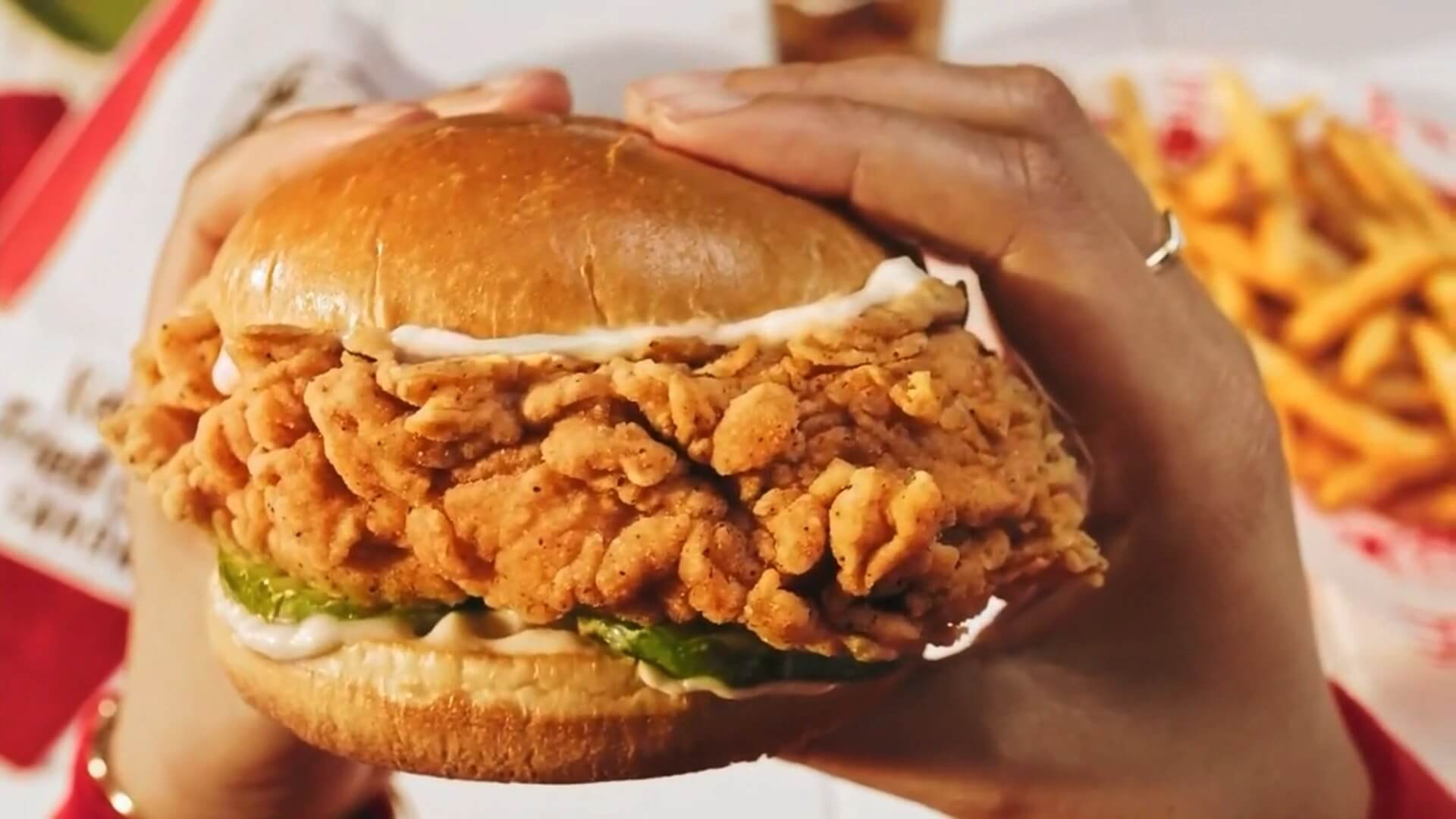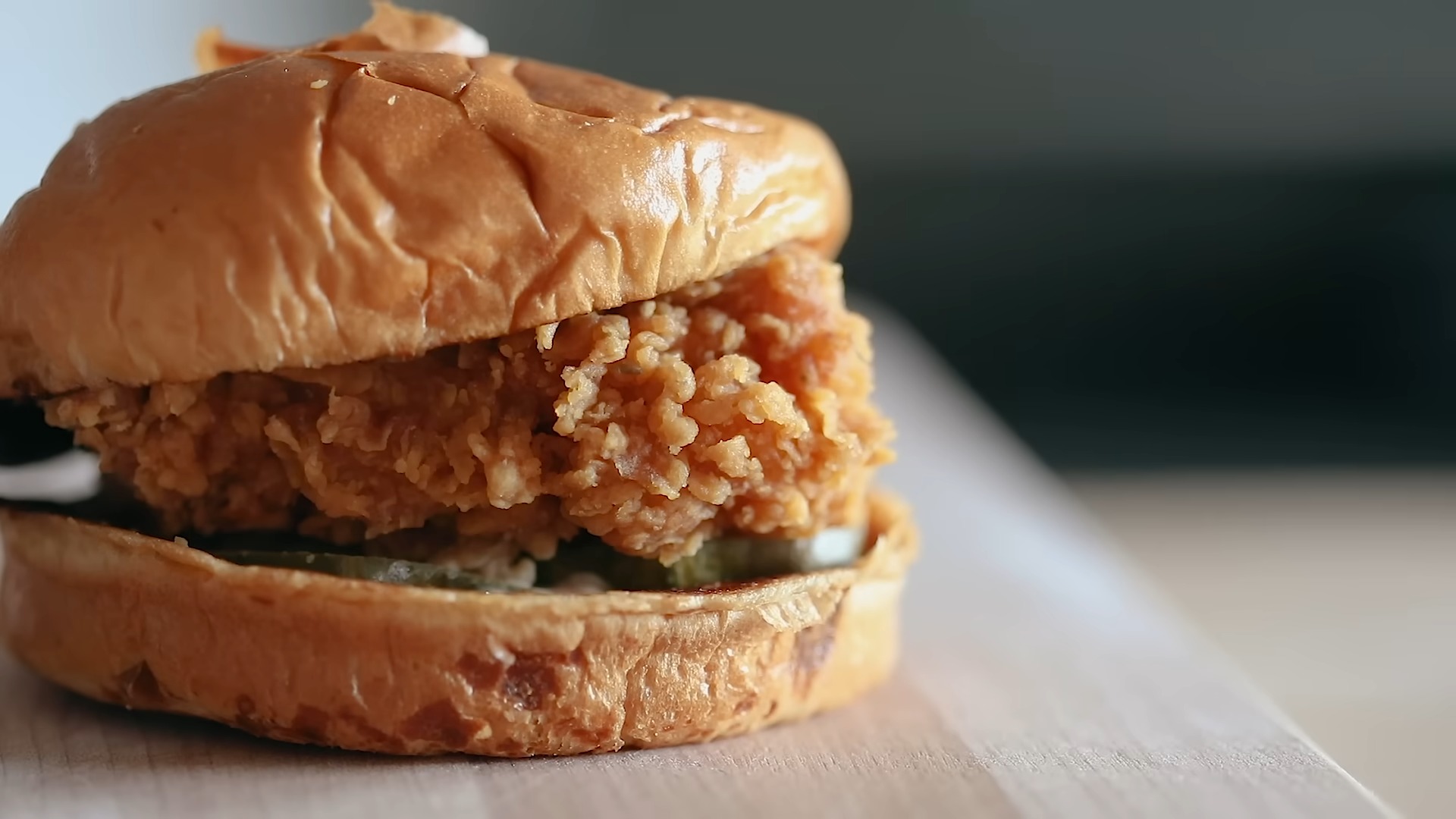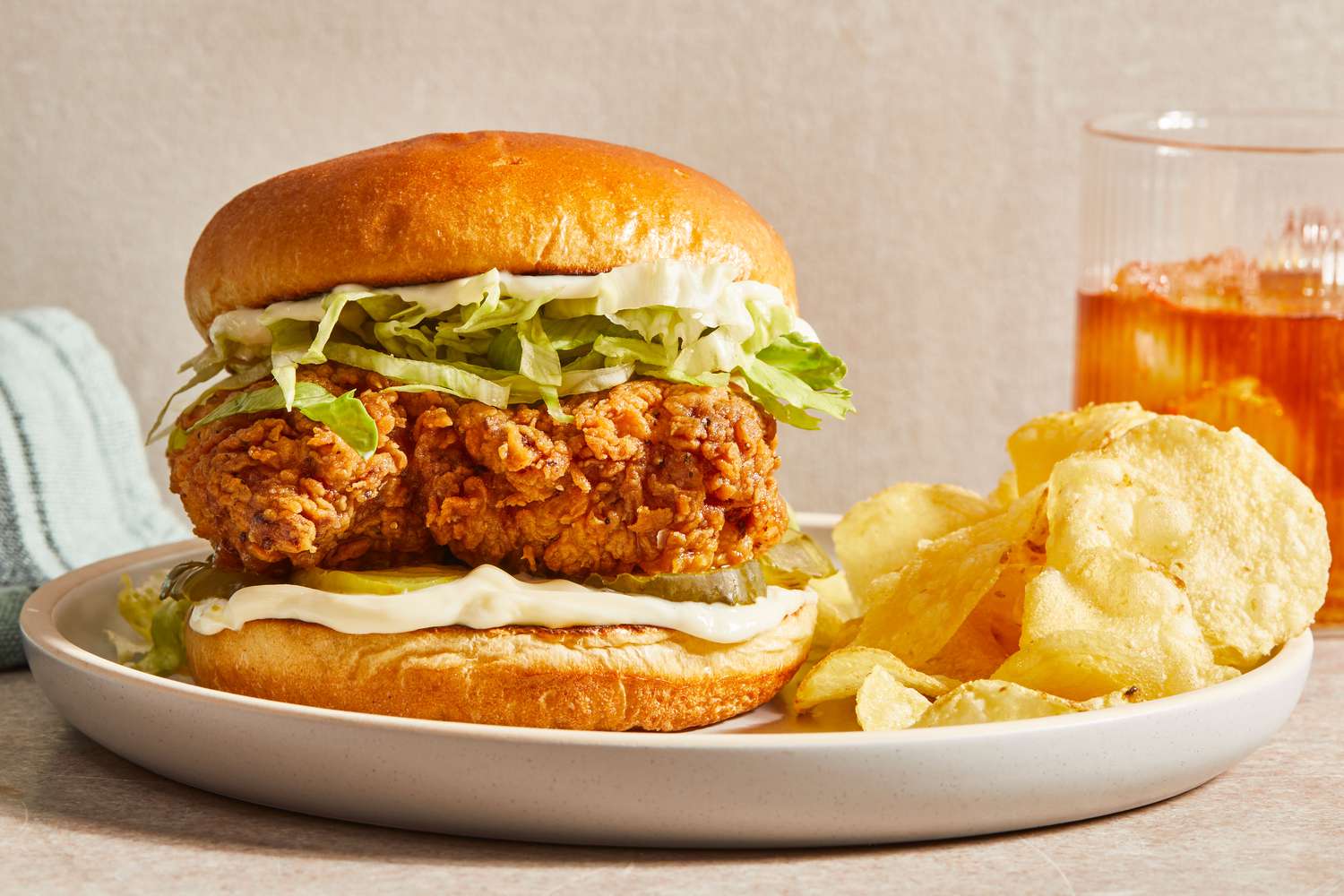Fried chicken sandwiches hold a special place in our hearts and kitchens.
As we explore the history of this savory delight, we see its roots dating back to the 18th century
Fried chicken was already a favorite in the Southern United States, long before fast-food chains like Chick-fil-A claimed to have invented the sandwich version in the 1960s.
These sandwiches quickly became popular because they combine the satisfying crunch of fried chicken with the convenience of handheld food.
Historical Evolution of the Fried Chicken Sandwich
Fried chicken sandwiches have a rich history that reflects their origins, influence from Scottish immigrants, and their growth in American culture.
From humble beginnings to fast food icons, let’s explore each stage.
Origins and Scottish Influence

The fried chicken sandwich owes part of its creation to Scottish immigrants who brought their frying techniques to the American South. These methods included deep-frying chicken in fat, unlike the English method of boiling or baking.
Enslaved Africans in the South refined this way of cooking, introducing flavorful spices.
This blend of Scottish frying with African seasoning laid the foundation for what we now recognize as fried chicken. As these communities grew, the combination of these culinary influences began to take form.
Emergence in American Culture

The chicken sandwich began its rise in American culture during the early 20th century. Delicatessens and small eateries started to serve fried chicken on bread, catering to working-class customers looking for quick, hearty meals.
After World War II, the convenience of these sandwiches helped them gain popularity.
Fried chicken sandwiches started appearing more frequently in various regions, partly due to the increase in fast food chains.
Restaurants like KFC, founded by Colonel Sanders, played a significant role in popularizing fried chicken.
From Deli to Fast Food
The transition from the deli to fast food changed how Americans enjoyed fried chicken sandwiches. Chains like McDonald’s and Popeyes introduced their versions, igniting the “Chicken Sandwich Wars” with a focus on taste and innovation.
In recent years, we’ve seen even more variations, such as Nashville Hot Chicken sandwiches, gaining popularity. These fast food giants continue to shape the way we consume fried chicken sandwiches, making them a staple in American cuisine.
The historical roots, combined with modern-day twists, illustrate why the fried chicken sandwich remains a beloved part of our diets.
Anatomy of the American Fried Chicken Sandwich
An American fried chicken sandwich typically features a breaded and fried chicken cutlet, a bun or roll, various toppings like pickles and slaw, and often a sauce. Regional variations add unique twists with local ingredients and preparation methods.
Key Ingredients and Variations

A classic fried chicken sandwich starts with breaded chicken.
The chicken is often marinated in buttermilk and seasoned with spices like:
- Paprika
- Garlic powder
- Cayenne pepper
This ensures a juicy and flavorful interior.
The bun is crucial. We see brioche and potato rolls mostly used due to their soft texture that complements the crunchy chicken well.
Common toppings include pickles, which add a tangy crunch, and slaw for a refreshing kick.
Some variations might feature a spicy mayo or honey butter sauce.
Chefs might also experiment with different cuts like chicken thighs for a richer flavor, or add extras such as bacon and Swiss cheese for a gourmet twist.
Regional Specialties Across the U.S.
Different parts of the country have their own takes on the fried chicken sandwich. In Nashville, the Hot Chicken sandwich reigns supreme.
This version is coated in a fiery spice blend and often paired with cooling elements like pickles and dry coleslaw.
Memphis offers a BBQ-inspired twist, seasoned with spices similar to those used in their famous BBQ dishes.
In the Midwest, pork tenderloin sandwiches offer a similar concept, featuring a breaded and fried pork cutlet.
In Texas, we might find the addition of beef and gravy for extra heartiness, while North Carolina focuses on tangy vinegar-based slaw to complement the fried chicken’s richness.
Signature Sandwiches from Renowned Establishments
Several establishments have made a name for their unique fried chicken sandwiches. Chick-fil-A claims to have popularized this dish nationally in the 1960s, serving it with just a bun and pickles. Momofuku in New York elevates the sandwich with gourmet tweaks, like adding a spicy glaze.
Popeye’s ignited a national craze with its sandwich featuring a buttermilk-marinated chicken breast, served on a toasted brioche bun with butter, pickles, and a special mayo.
Baltimore’s famous pit beef joints occasionally offer fried chicken sandwiches with a local twist, adding their famous horseradish sauce for a unique flavor punch.
Cultural and Social Impact
Fried chicken sandwiches have a significant role in American society, both as a culinary favorite and a symbol.
We will explore how they represent American culture and their presence in popular media.
Symbolism in American Society
Fried chicken sandwiches symbolize more than just a meal. They are a representation of American culinary creativity and diversity.
From birthday parties to wakes, the sandwiches find their way into many important moments. They are comfort food, representing a sense of belonging and community.
The evolution from deli sandwiches to iconic fast food items highlights America’s love for combining flavors like fried chicken, pickles, and hearty buns. This sandwich has become a staple at diners and fast-food chains alike, such as KFC, Chick-fil-A, and Popeyes.
The Role in Popular Culture and Media
Fried chicken sandwiches have a noticeable presence in popular culture and media. Shows like David Chang’s “Ugly Delicious” explore their roots and social impact.
Chefs and food writers often spotlight the sandwich to discuss deeper cultural issues.
The “Chicken Sandwich Wars” between brands like Popeyes, Chick-fil-A, Wendy’s, and Fuku captured public attention on platforms like Facebook.
These rivalries not only boosted sales but also sparked conversations about quality and tradition.
The sandwich’s influence also reaches beyond the U.S. to places like China and Europe, illustrating its global impact.
Current Trends and Future Outlook
In recent years, fried chicken sandwiches have become incredibly popular, sparking intense competition among fast-food giants.
Innovation and Healthy Alternatives
Fast food chains like Chick-fil-A, Popeyes, and McDonald’s have introduced new variations of fried chicken sandwiches to stay competitive.
We have seen the introduction of spicy versions, different buns, and even gourmet dipping sauces.
Restaurants are also responding to health-conscious consumers by offering grilled chicken options and plant-based alternatives.
Economic Impact of Chicken Sandwich Popularity
The chicken sandwich wars have had a notable economic impact on the fast food industry.
For instance, Popeyes reported a 38% increase in sales after launching their new sandwich. Their average-unit volumes rose by $400,000, bringing it to $1.8 million.
This craze has led to higher demand for chicken, affecting supply chains.
Predictions for the Fried Chicken Sandwich Market
Experts suggest that while fried chicken sandwiches will remain popular, we may see a shift back to chicken wings and diverse menu items like tacos.
The trend towards customizing orders with gourmet dips is expected to continue.
Fast food giants are likely to keep innovating to capture consumer interest, leading to more diverse offerings.

